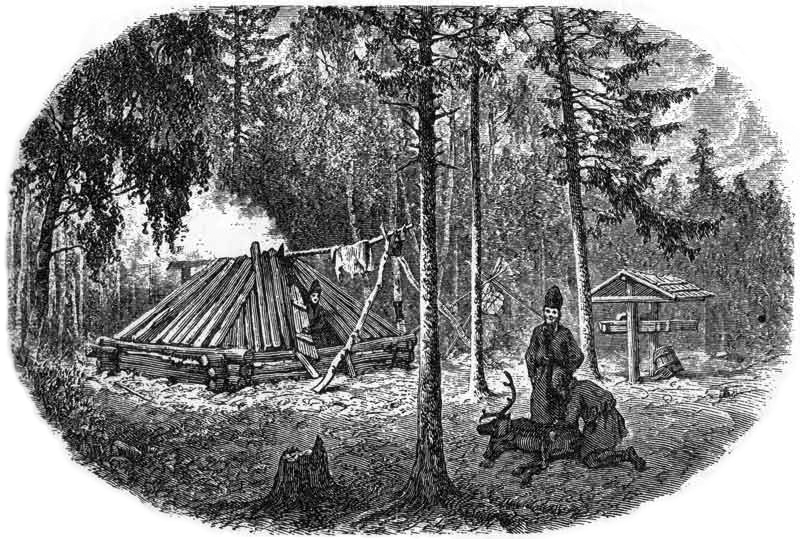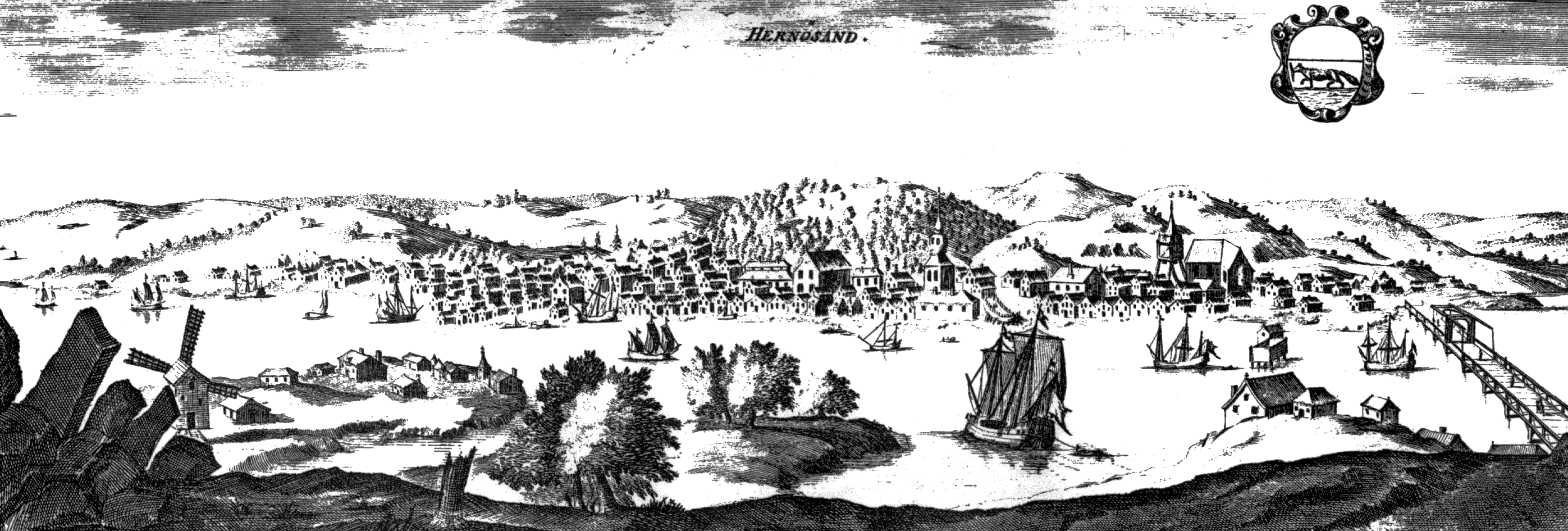|
Anna Nordlander
Anna Catharina Nordlander (28 October 1843 – 26 February 1879), was a Swedish painter. She is known for her portraits and her depictions of genre- nature- and folk life: she is also counted as a pioneer in the illustration of the lives of the Forest Sami (''Skogssamar'') of northern Sweden. Biography Anna Nordlander was born in the vicarage at Skellefteå in Västerbotten County, Sweden to Nils Nordlander (1796–1874) and Anna Maria Gestrin. Her father was parish vicar and in 1841 among the founders of the town of Skellefteå. She studied at the Royal Swedish Academy of Arts (1866) under Jean-François Portaels in Brussels and at the Académie Julian in Paris. Nordlander is represented in several Swedish museums including the Nationalmuseum in Stockholm. She was not particularly acknowledged until the late 20th-century. Her artistic pursuit first attracted broader attention posthumously. Nordlander died in Härnösand at 36 years old. Museum Anna Nordlander Museum Anna N ... [...More Info...] [...Related Items...] OR: [Wikipedia] [Google] [Baidu] |
Forest Sami
The forest Sami ( sv, Skogssamer) are Sami people who live in the woods and who, unlike the reindeer-herding Sami people (the "fell Sami"), do not move up into the fells during the summer season. Historically, there have been forest Sami in Sweden in the area ranging from northern Ångermanland to the far north. In the early 1600s the term ''granlapp'' was also used to refer to the Sami people who paid taxes only to Sweden, compared to the semi-nomadic fell Sami, who, since they worked in the fells that straddled the Swedish-Norwegian border, had to pay taxes to both countries. When Ernst Manker studied the life of the forest Sami in the early 20th century, nearly all of their habitations had been abandoned. Only one forest Sami village remained, in Malå in Västerbotten, an area known as Stenundslandet in Anundsjö. Background Historically, there were forest Sami in the northern parts of Ångermanland and further north in Sweden. The two southernmost Sami regions, Åsele and ... [...More Info...] [...Related Items...] OR: [Wikipedia] [Google] [Baidu] |
Skellefteå
Skellefteå (, locally ) is a Cities in Sweden, city in Västerbotten County, Sweden. It is the seat of Skellefteå Municipality, which had 73,246 inhabitants in 2021. The city is historically industrial, with mining being a large part of that industry, especially for gold, leading to the city being nicknamed ''Guldstaden'' ("gold town"). Politically, Skellefteå is a Social Democrats (Sweden), Social Democratic stronghold. The city is a well-known hockeytown, ice hockey town, with its main team Skellefteå AIK playing in the Swedish top division: the Swedish Hockey League, SHL, which they have won on several occasions; most recently in 2013–14 SHL season, 2014. The city was incorporated in 1845 and grew to its current population size in the 1950s and 1960s, growing only slowly since. It is the second largest city in Västerbotten after Umeå and is located roughly halfway between it and Luleå. The Skellefte River passes through the city and it is located around from the Both ... [...More Info...] [...Related Items...] OR: [Wikipedia] [Google] [Baidu] |
Västerbotten County
Västerbotten County ( sv, Västerbottens län) is a county or ''län'' in the north of Sweden. It shares the borders with the counties of Västernorrland, Jämtland, and Norrbotten, as well as the Norwegian county of Nordland and the Gulf of Bothnia. Its capital is Umeå that houses about half of the population when combined together with the largest town in the northern part Skellefteå. The two municipalities themselves are making up the majority of the population. The county has vast wilderness areas and Västerbotten County has a land area larger than Denmark, the Netherlands and Switzerland. Provinces ''For history, geography, and culture, see: Västerbotten, Lapland, and Ångermanland'' Västerbotten County covers the province of Västerbotten and parts of the provinces Lapland and Ångermanland. Prior to 1809, though, it covered much more extensive space. Administration The main aim of the County Administrative Board is to fulfil the goals set in national politics ... [...More Info...] [...Related Items...] OR: [Wikipedia] [Google] [Baidu] |
Vicar
A vicar (; Latin: ''vicarius'') is a representative, deputy or substitute; anyone acting "in the person of" or agent for a superior (compare "vicarious" in the sense of "at second hand"). Linguistically, ''vicar'' is cognate with the English prefix "vice", similarly meaning "deputy". The title appears in a number of Christian ecclesiastical contexts, but also as an administrative title, or title modifier, in the Roman Empire. In addition, in the Holy Roman Empire a local representative of the emperor, perhaps an archduke, might be styled "vicar". Roman Catholic Church The Pope uses the title ''Vicarius Christi'', meaning the ''vicar of Christ''. In Catholic canon law, ''a vicar is the representative of any ecclesiastic'' entity. The Romans had used the term to describe officials subordinate to the praetorian prefects. In the early Christian churches, bishops likewise had their vicars, such as the archdeacons and archpriests, and also the rural priest, the curate who had the ... [...More Info...] [...Related Items...] OR: [Wikipedia] [Google] [Baidu] |
Royal Swedish Academy Of Arts
The Royal Swedish Academy of Fine Arts ( sv, Kungliga Akademien för de fria konsterna), commonly called the Royal Academy, is located in Stockholm, Sweden. An independent organization that promotes the development of painting, sculpture, architecture, and other fine arts, it is one of several Swedish Royal Academies. The Royal Institute of Art, an art school that was once an integral part of the Academy, was broken out in 1978 as an independent entity directly under the supervision of the Ministry of Education. History In 1735, Carl Gustaf Tessin set up a drawing school at Stockholm Castle, naming it the Royal Drawing Academy. It was modeled after French academies of the day as a gathering place for established artists and art connoisseurs. The painters Guillaume Taraval, Johan Henrik Scheffel, and Olof Arenius and the architect Carl Hårleman taught there, and the first group of students included Johan Pasch. In 1766, the academy expanded its activities following a parliamenta ... [...More Info...] [...Related Items...] OR: [Wikipedia] [Google] [Baidu] |
Jean-François Portaels
Jean-François Portaels or Jan Portaels (3 April 1818 – 8 February 1895) was a Belgian painter of genre scenes, biblical stories, landscapes, portraits and orientalist subjects. He was also a teacher and director of the Academy of Fine Arts of Ghent and the Académie Royale des Beaux-Arts in Brussels.Jean François Portaels at the He is regarded as the founder of the Belgian Orientalist school. He was praised in his time as the premier painter of 'everyday elegance and feminine grace'.Edmond-Louis de Taeye, ''Les artistes belges contemporains. Leur vie, leurs œuvres, leur place dans l'art'', Castaigne, Brussels, 1 ... [...More Info...] [...Related Items...] OR: [Wikipedia] [Google] [Baidu] |
Académie Julian
The Académie Julian () was a private art school for painting and sculpture founded in Paris, France, in 1867 by French painter and teacher Rodolphe Julian (1839–1907) that was active from 1868 through 1968. It remained famous for the number and quality of artists who attended during the great period of effervescence in the arts in the early twentieth century. After 1968, it integrated with . History Rodolphe Julian established the Académie Julian in 1868 at the Passage des Panoramas, as a private studio school for art students.Tate Gallery"Académie Julian."/ref> The Académie Julian not only prepared students for the exams at the prestigious École des Beaux-Arts, but offered independent alternative education and training in arts. "Founded at a time when art was about to undergo a long series of crucial mutations, the Academie Julian played host to painters and sculptors of every kind and persuasion and never tried to make them hew to any one particular line". In 1880, wo ... [...More Info...] [...Related Items...] OR: [Wikipedia] [Google] [Baidu] |
Nationalmuseum
Nationalmuseum (or National Museum of Fine Arts) is the national gallery of Sweden, located on the peninsula Blasieholmen in central Stockholm. The museum's operations stretches far beyond the borders of Blasieholmen, the nationalmuseum manage the National Portrait gallery collection at Gripshom, Gustavsbergporclain museum, a handful of castle collections and the Swedish Institute in Paris (Institut Tessin). In the summer of 2018 Nationalmuseum Jamtli opened in Östersund as a way to show a part of the collection in the north of Sweden. The museum's benefactors include King Gustav III and Carl Gustaf Tessin. The museum was founded in 1792 as Kungliga Museet ("Royal Museum"). The present building was opened in 1866, when it was renamed the Nationalmuseum, and used as one of the buildings to hold the 1866 General Industrial Exposition of Stockholm. The current building, built between 1844 and 1866, was inspired by North Italian Renaissance architecture. It is the design of ... [...More Info...] [...Related Items...] OR: [Wikipedia] [Google] [Baidu] |
Härnösand
Härnösand () is a locality and the seat of Härnösand Municipality in Västernorrland County, Sweden with 17,556 inhabitants in 2010. It is called "the gate to the High Coast" because of the world heritage landscape just a few miles north of Härnösand. Härnösand is the seat of the Diocese of Härnösand. History On 10 December 1885, Härnösand became the first town in Sweden with electric street lighting, following the Gådeå power station being taken into use. Education Härnösand is the seat of The National Agency for Special Needs Education and Schools (''Specialpedagogiska skolmyndigheten''). The Swedish International Development Cooperation Agency (Sida) operates its training programme Sida Partnership Forum in Härnösand. Industry One of the biggest employers in Härnösand is the cable-TV and Cable internet service provider Com Hem. Sports The women's team of the bandy club Härnösands AIK plays in the highest division and the men's team has don ... [...More Info...] [...Related Items...] OR: [Wikipedia] [Google] [Baidu] |
Nordlander
{{Infobox family , name = Nordlander , crest = , crestcaption = , image = Norrlands gård i Bjärtrå socken.jpg , imagecaption = Norrland estate in Bjärtrå, Ångermanland, Sweden (1930), origin of the Nordlander family. , ethnicity = , birth_place = , region = , early_forms = , origin = Norrland, Bjärtrå, Ångermanland{{flag, Sweden , members = , connectedmembers= , otherfamilies = , distinctions = , traditions = , heirlooms = , estate = Norrland , meaning = , footnotes = Nordlander is a Swedish family originating from the village of Norrland, Bjärtrå in Ångermanland, Sweden. Daniel Persson (1683–1763) relocated to the Norrland estate from his former residence at the crown land ( sv, Kungsgård) of Bjärtrå, a power house in Ångermanland until the establishment of Härnösand in 1585. Subsequently, his sons Erik Nordlander (1723–1782) and Nils Nordlander ... [...More Info...] [...Related Items...] OR: [Wikipedia] [Google] [Baidu] |
Bjärtrå
Bjärtrå is a parish of the province of Ångermanland in Sweden. Since 1974 it has been administered as part of the Kramfors Municipality. The parish has an area of 158 square kilometres, and in the year 2000 there were 1,687 inhabitants. The locality of Lugnvik and parts of Sandslån, Klockestrand, and Strinne, lie within Bjärtrå.Hans Harlen, ''Sverige från A till Ö'' (Stockholm: Kommentus, 2003; ) The parish was established in the Middle Ages. In 1862 the rural district of Bjärtrå was created. In 1974 this was merged into the municipality of Kramfors. Round Barn The Bjärtrå round barn A round barn is a historic barn design that could be octagonal, polygonal, or circular in plan. Though round barns were not as popular as some other barn designs, their unique shape makes them noticeable. The years from 1880 to 1920 represent th ... ''(pictured)'' is a wooden building believed to have been constructed about 1848. In 1958 it was bought by a history society, which ... [...More Info...] [...Related Items...] OR: [Wikipedia] [Google] [Baidu] |


.jpg)
